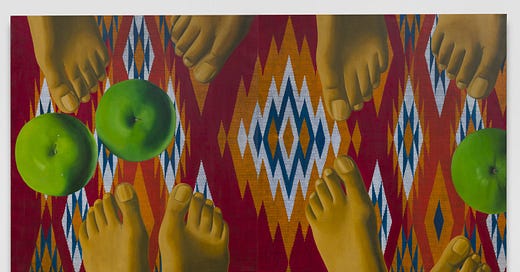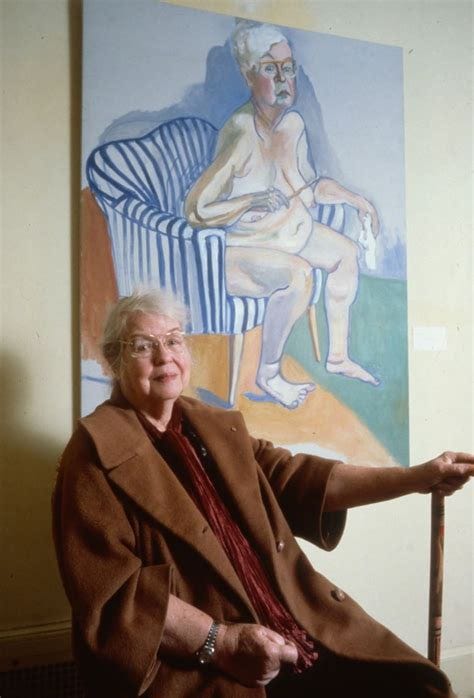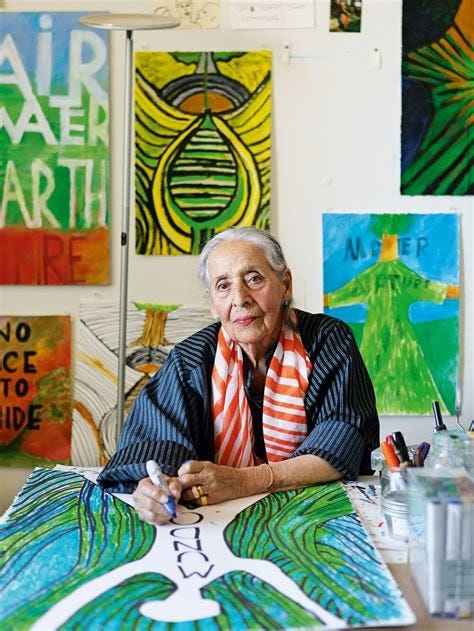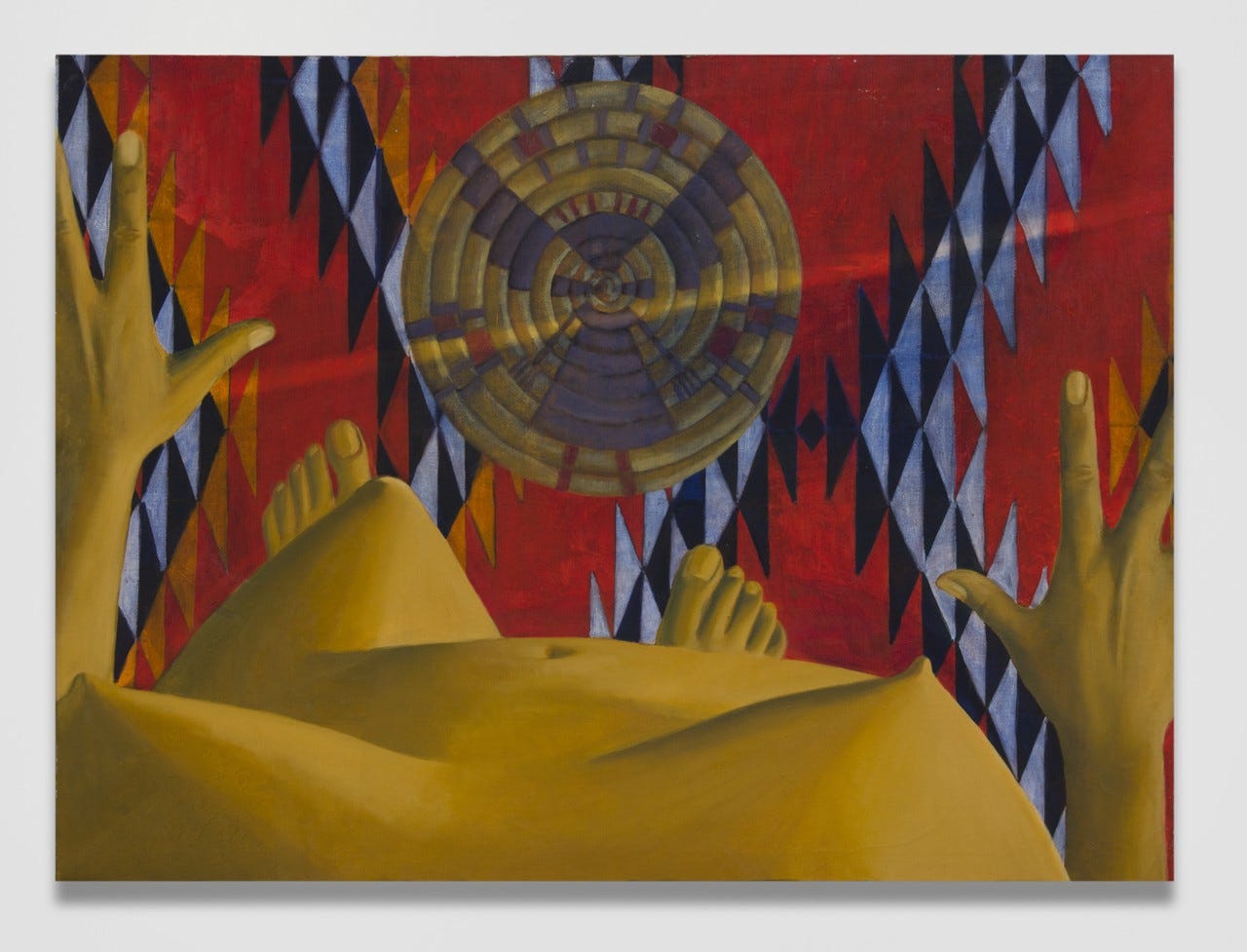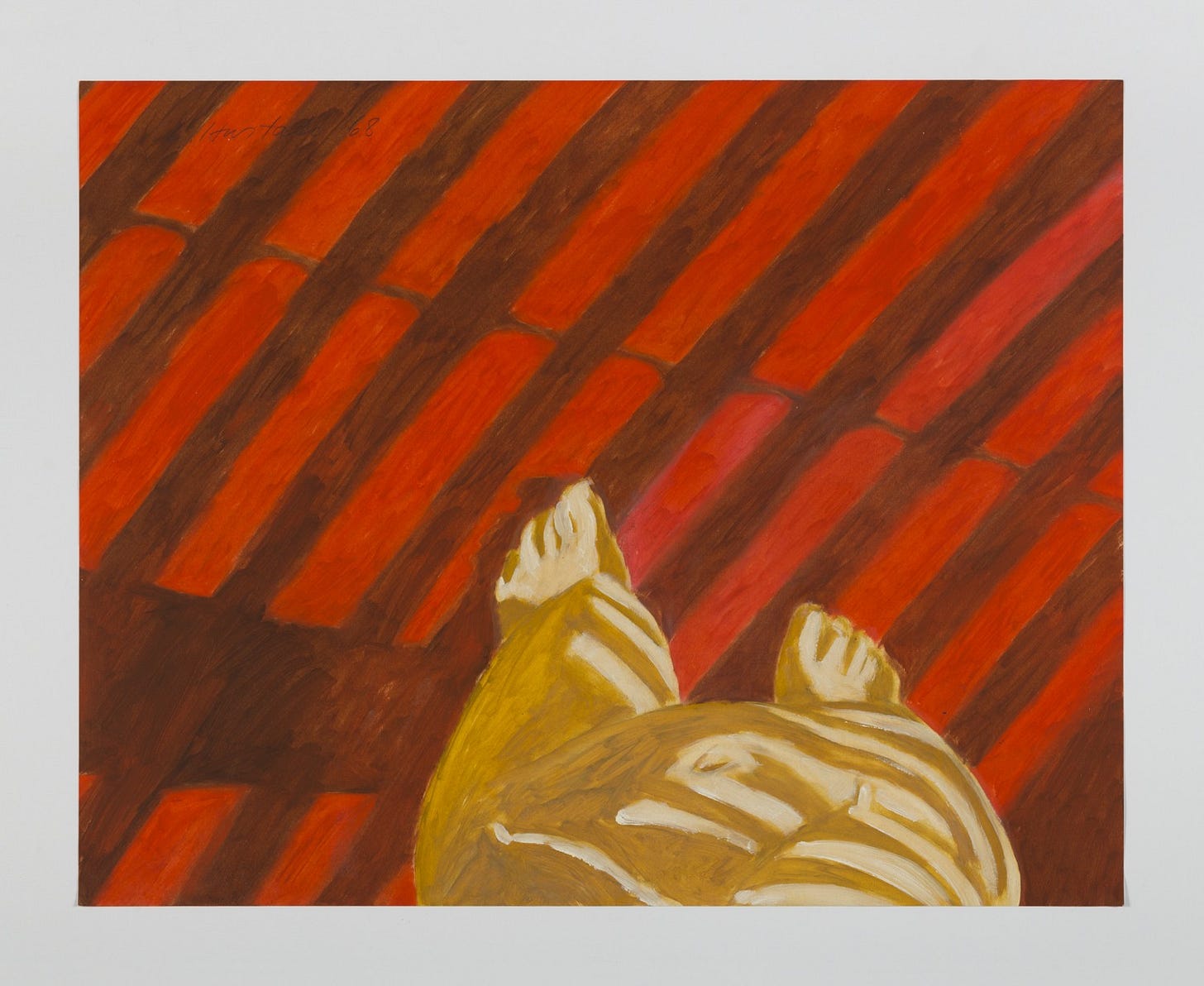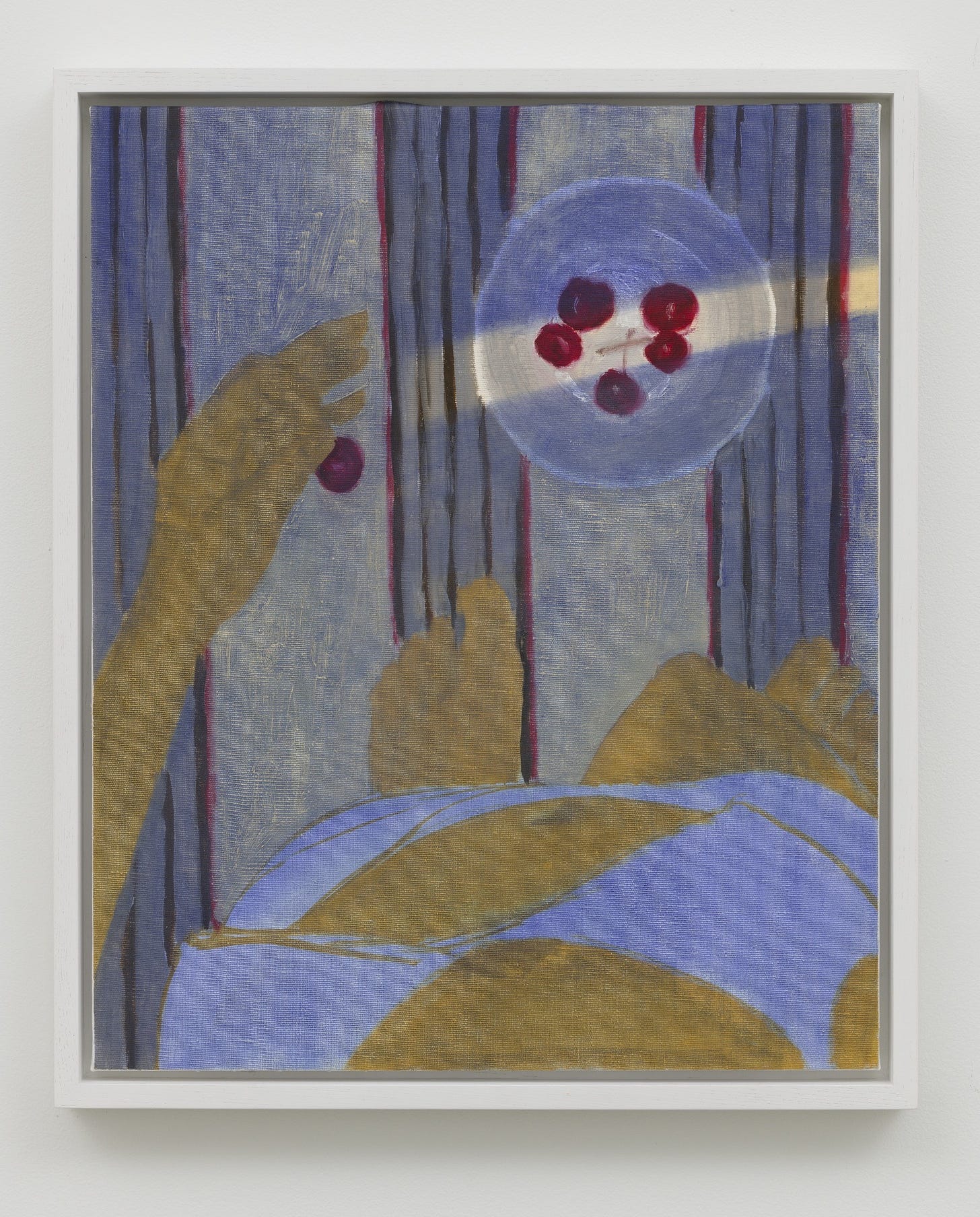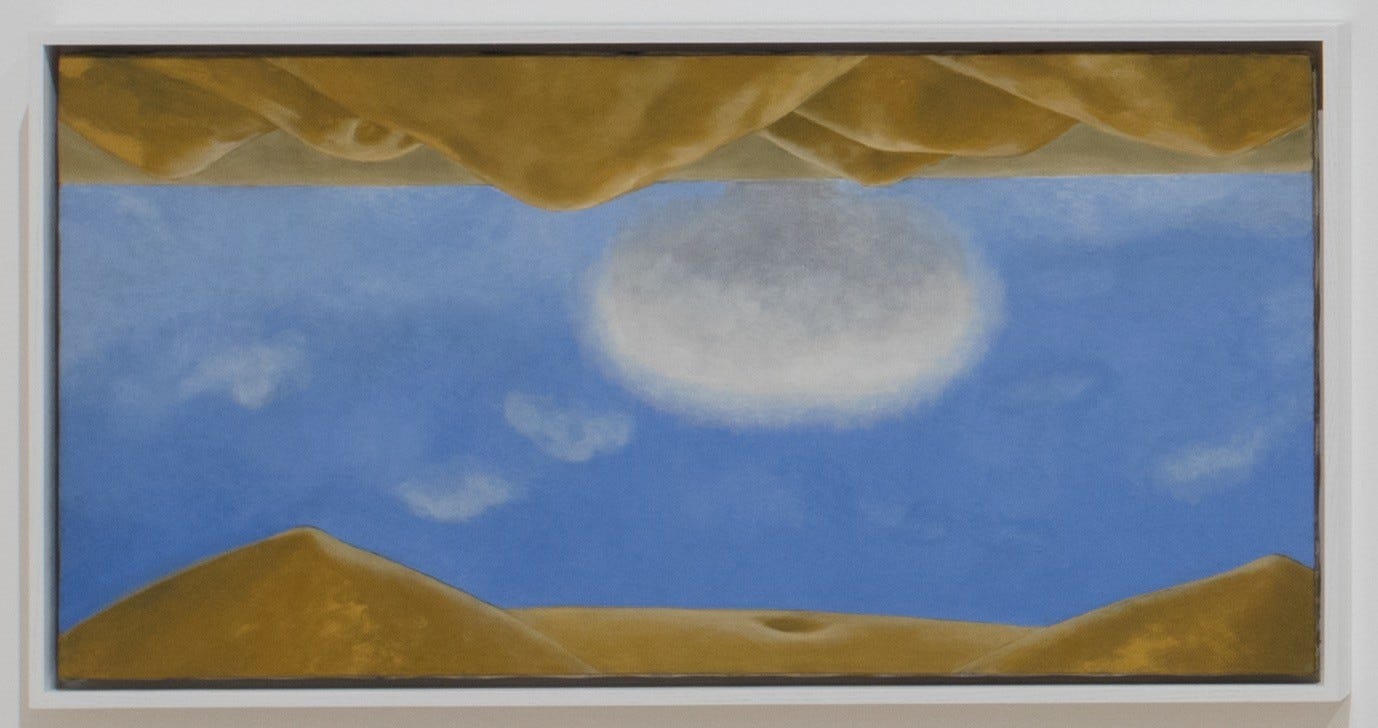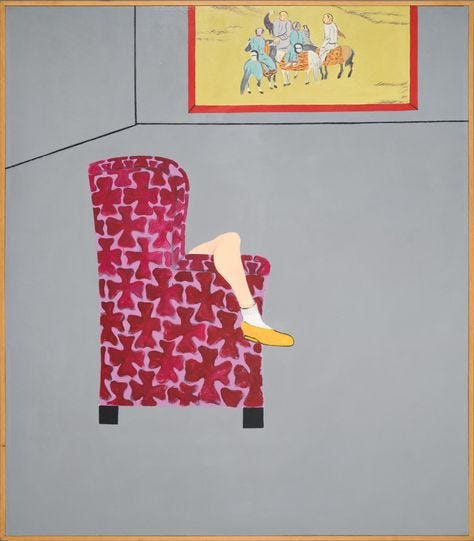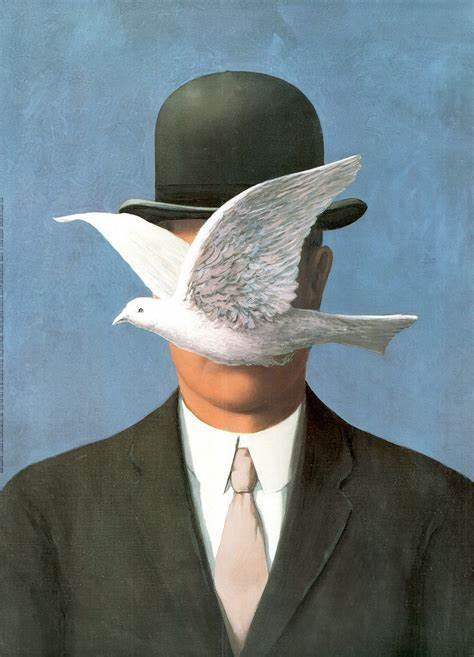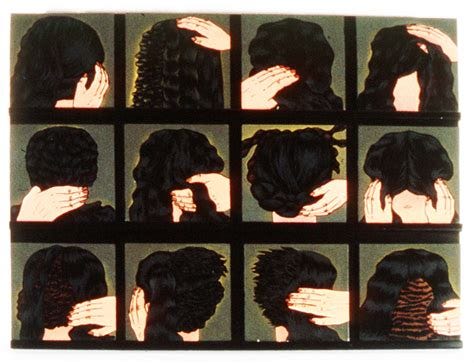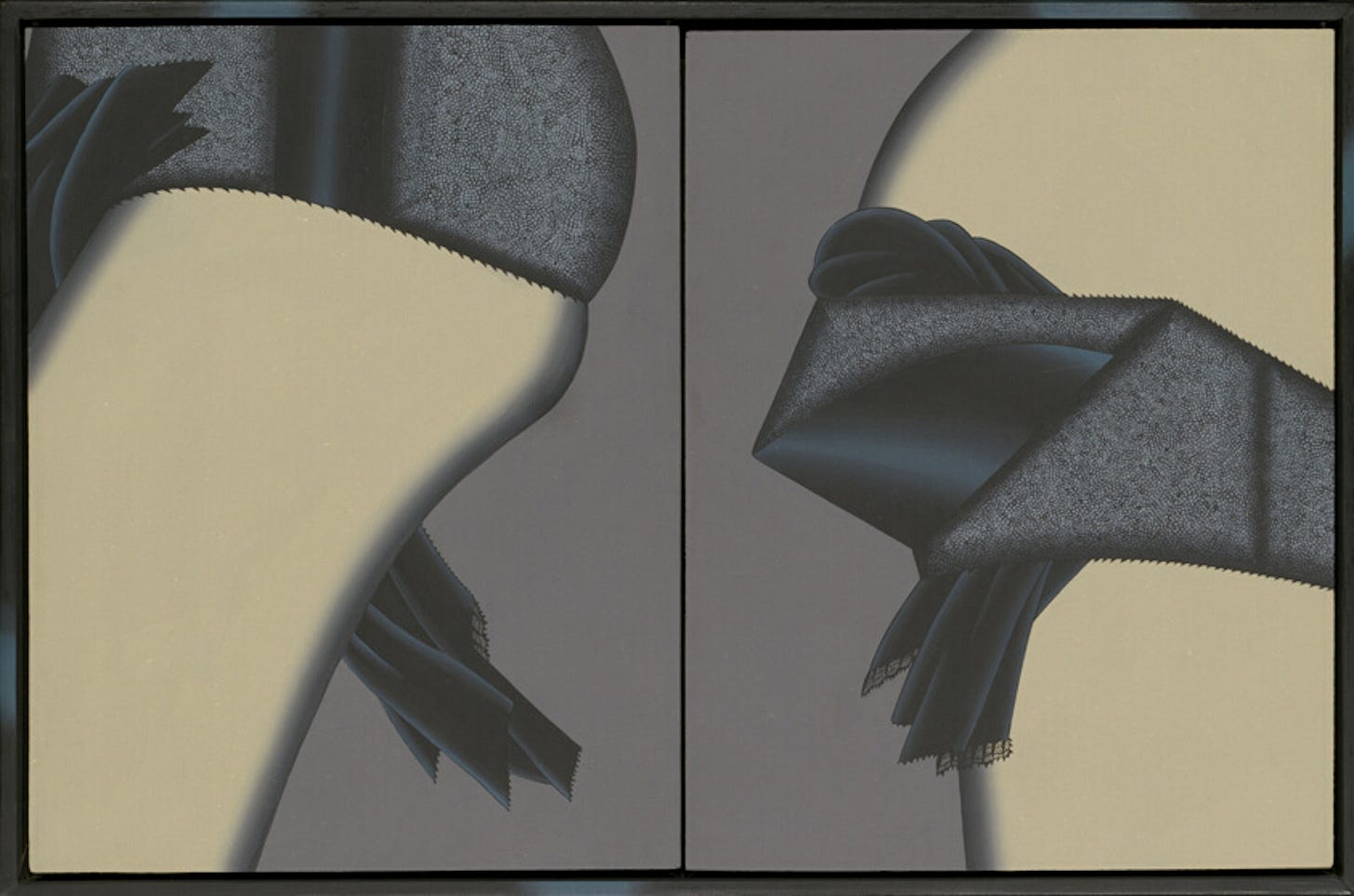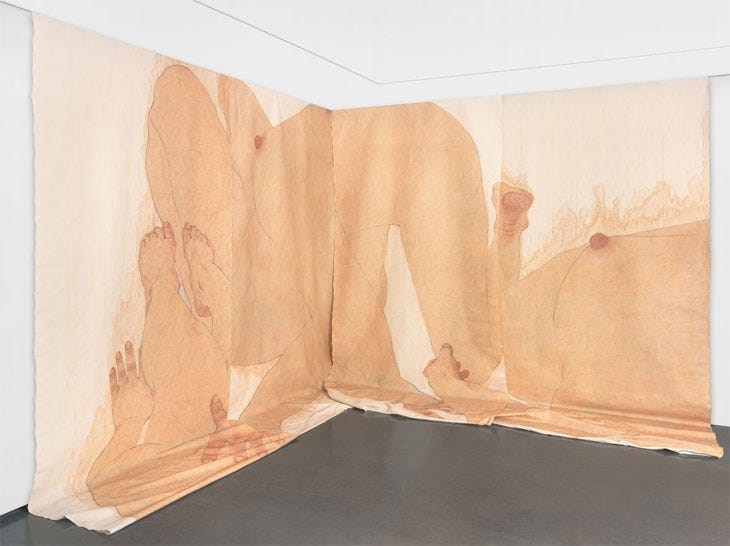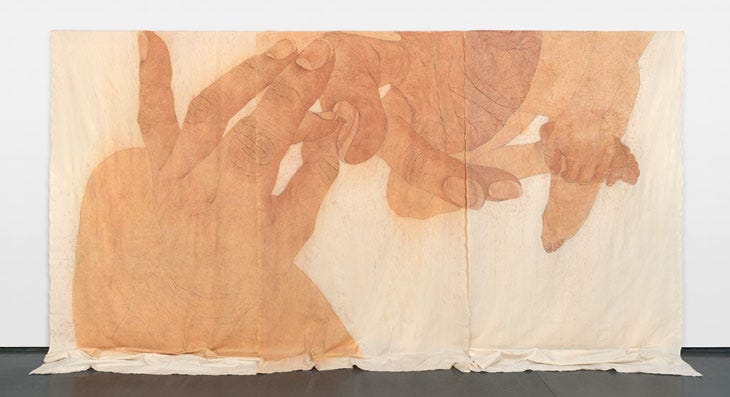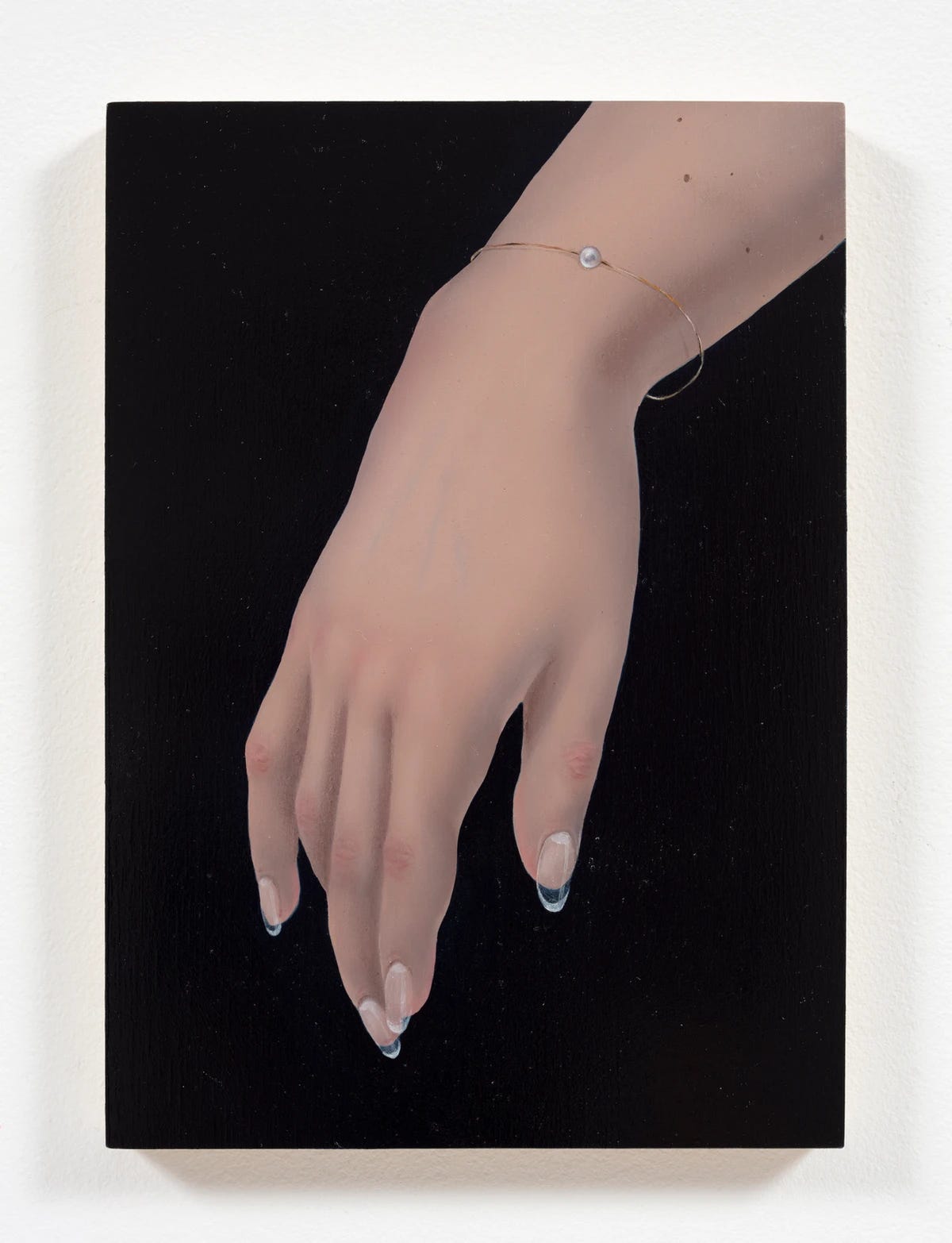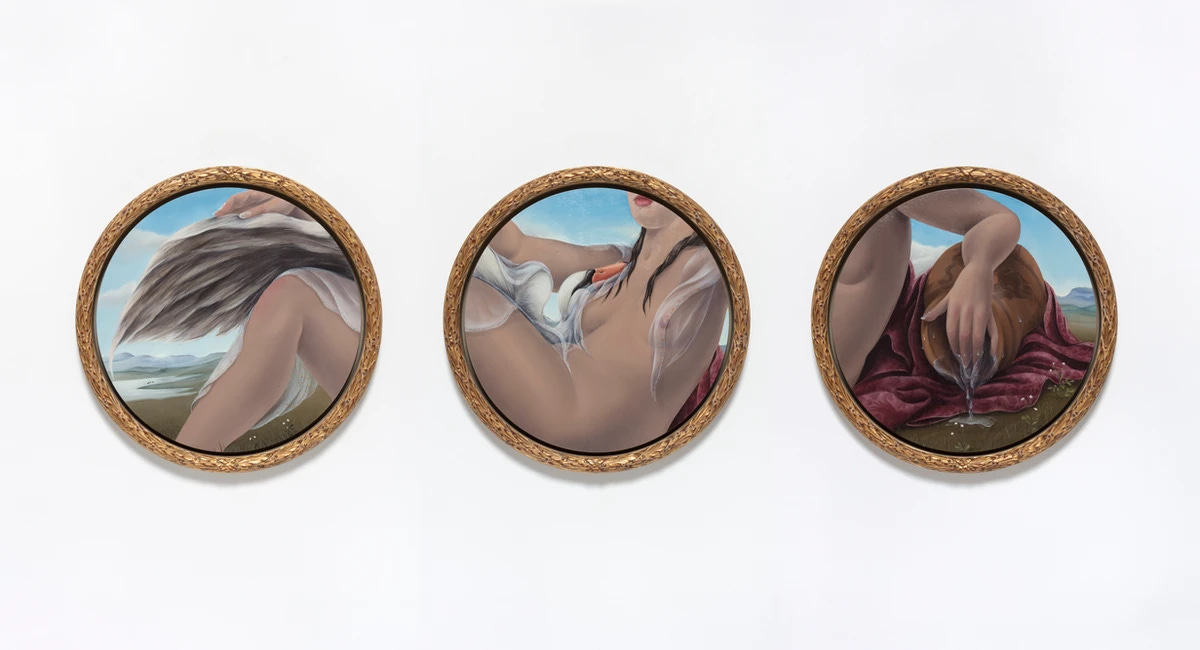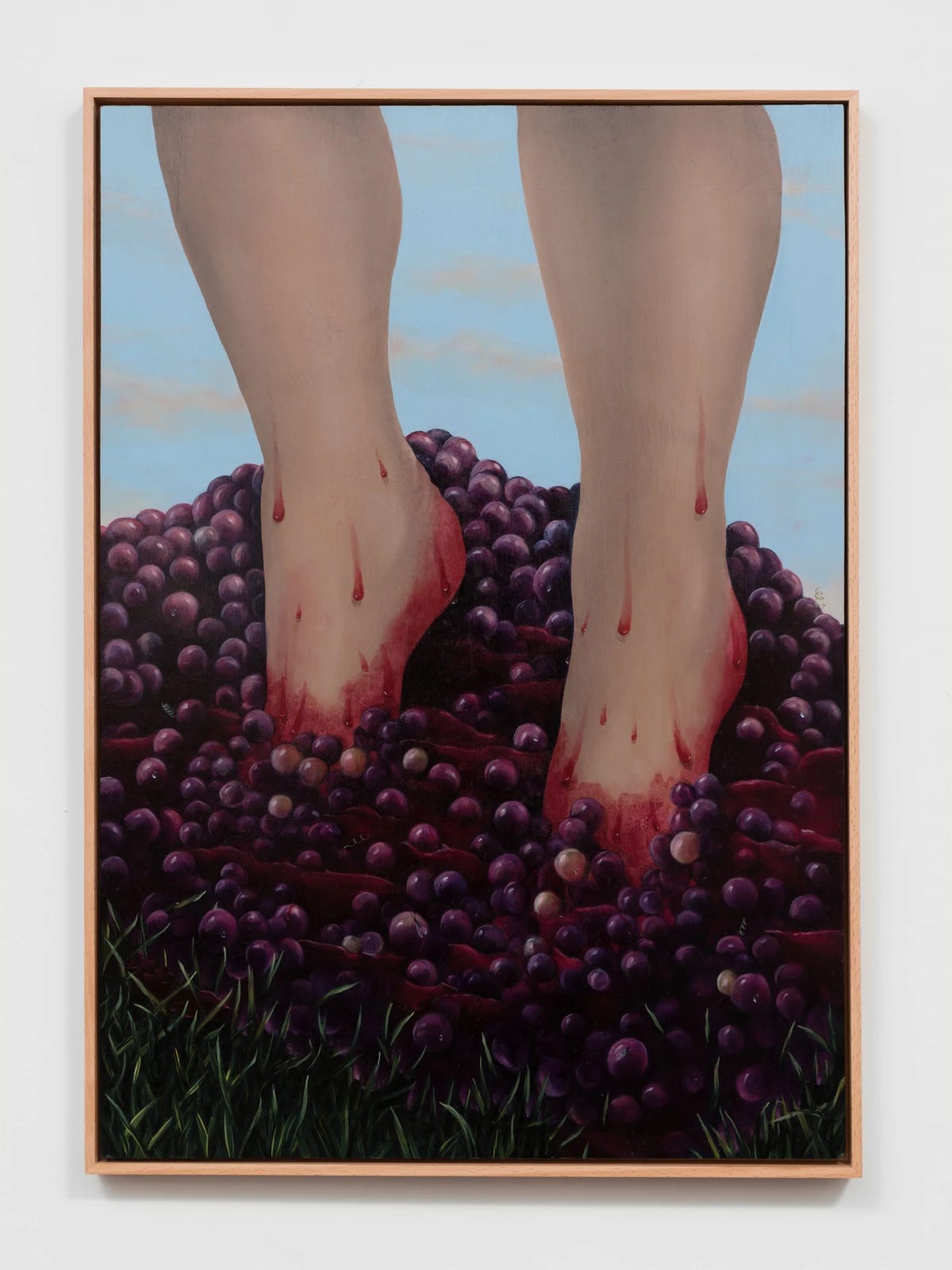Doing a self portrait can be a traumatic event, especially if your self portrait involves you taking off your clothes and painting your own body nude. Alice Neel said of painting this self-portrait that it was so hard and embarrassing that it caused her cheeks to become red and inflamed, which, of course, she painted. I can only imagine.
Artist Alice Neel in front of a self portrait circa 1980 in New York City. Getty Images
But I recently introduced a new kind of self-portrait exercise to my adult students where they could produce a self portrait of themselves from a new perspective and hopefully free themselves up to really explore who they are.
We began by looking at the world of Venezuelan-American painter Luchita Hurtado, an artist who recently died at 99 years old and in that almost century of making art produced a wide range of work, from abstract and text to botanical. But my class focused on two series she created where she presented her own body in strange and surreal ways.
In one body of work, called “I Am” Hurtado, gives us the perspective of the artist looking down, often at a piece of fruit or textiles. In an artist statement from that period Hurtado wrote that the female nudes are “ looking down at themselves, feet planted solidly on the ground and breasts like mountains. They seem to be saying, “This is what I am.”” It is worth noting that these paintings were painted in the closet that she used at that time while busy raising four children. So there’s that to read into these images as well (says the woman who often paints out of a closet…)
Luchita Hurtado, “I Am” Encounter, 1971
Luchita Hurtado, “I Am” , Untitled 1969
Luchita Hurtado, “I Am”, Untitled 1968
Luchita Hurtado, “I Am” , Untitled 1970
A second series on the body, “Body Landscapes”, takes this downward perspective to the next level and turns the forms Hurtado saw when looking down into actual landscapes.
Luchita Hurtado, “Body Landscape”, Untitled, 1970
Luchita Hurtado, “Body Landscape”, Untitled, 1970
We also looked at other contemporary artists making a practice of cutting up the figure and telling a story with the body parts that remain.
Joan Brown, a painter connected to feminist art and the Bay Area Figurative movement, gives us the perfect leg dangling from a chair, hinting at a young woman bored and possibly trapped.
Joan Brown, The Room, Pt. 1 (detail), 1975, Carnegie Museum of Art
Surrealists were always reimagining and extending the power of the portrait, here Magritte gives us his usual bowling hat (it was included 50 times in his work) that marks this subject as a generic, middle class, everyman on the street. And then a bird in flight concealing the man’s face, a bird that is as free as this man is trapped by society’s expectations of him.
Chicago Imagist Christina Ramberg (the Imagists mashed up surrealism with Pop art and comic book imagery) was constantly taking apart the female body and then wrapping it up with a hint of bondage. In cropping and stylizing her subjects into these enigmatic fragments, Ramberg forces the viewer to rethink the figure, sexuality and womanhood.
Christina Ramberg, Loose Beauty, 1973
Seung Ah Paik is a next gen painter of fragments of self, taking Hurtado’s merging of body and landscape to a new extreme with massive works, her approach to her material inspired by the washes of Korean Joseon Dynasty. Body parts in her world are distorted and the imperfections highlighted. As described on Saatchi Gallery, “Paik draws her painterly technique from the Korean portrait tradition of 육리문법 (yuk-ri-mun-bup), an artistic style through which the identity of the sitter is revealed through showing the minute details of a face.”
Seung Ah Paik, Maitreya, 2013
Natalia Gonzalez Martin paints icons of the human body using some old-school painting techniques in order to invent modernized fables. A woman behind a veil, figs at the feet of a presumably naked woman, a fragment of self.
Natalia Gonzalez Martin, Universal History of Betrayal: Cassiopeia (3)
Natalia Gonzalez Martin, Leda and the Swan in 3 Acts (The Great)
Natalia Gonzalez Martin, IF THE TEARS ARE ONLY A REFLECTION, 2021
Natalia Gonzalez MartinLos Dolores de la Carne/ Displeasures of the Flesh, 2021
WHO NEEDS A MUSE? What can you do with the bits and pieces of your body? Take inspiration from these amazing artists and paint your own nude looking down. What would you put at your feet to tell us who you are? Do you have enough courage to do a large painting of your biggest flaw? Or create a Magritte inspired portrait of you in a hat with your face concealed by what symbol? Are you a trapped everyman or everywoman? Then it could be a bird. Or do a series of paintings of your hair, as it grows increasingly gray or increasingly thin, telling the story of you aging. Paint your hand extending something that signals you - a bottle of Coors light, a book, a pill, a cherry. Or, you could always strip down like Alice Neel and give us the full monty.

